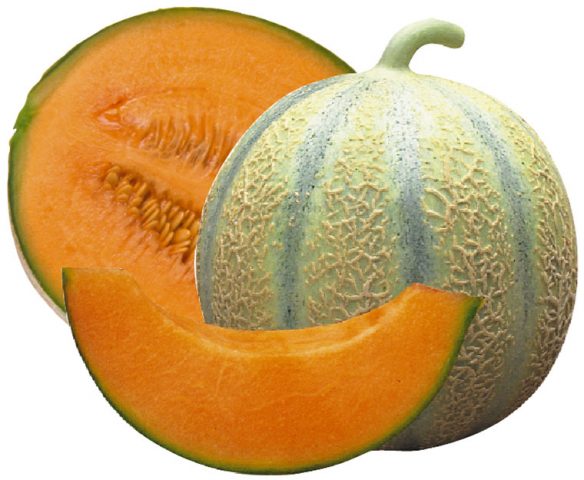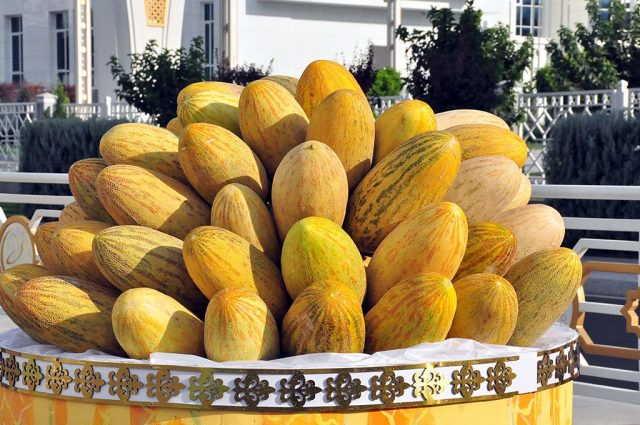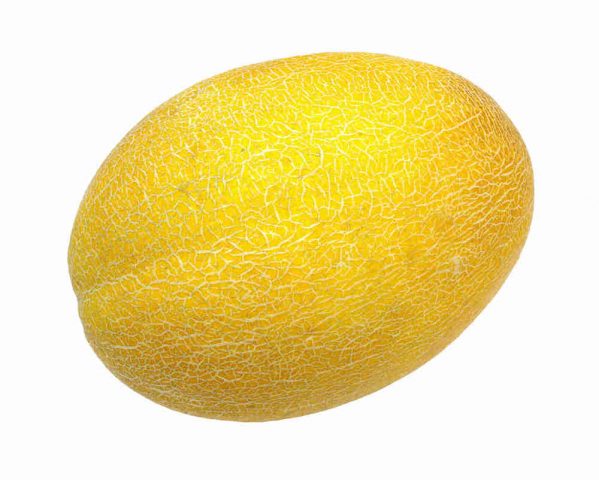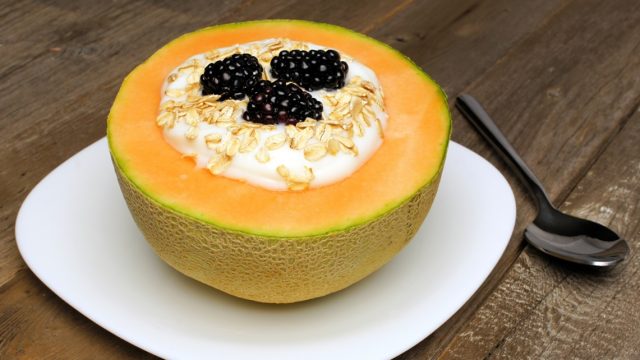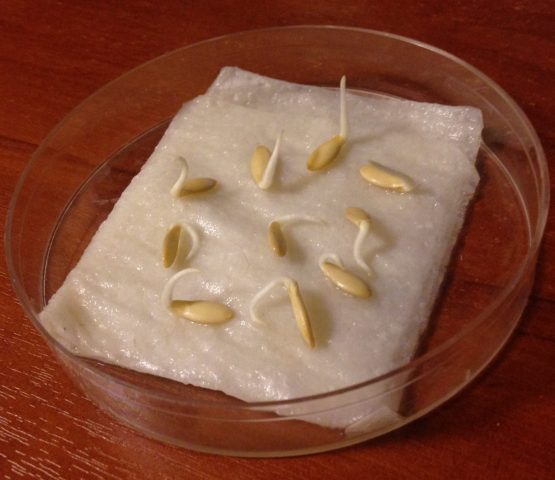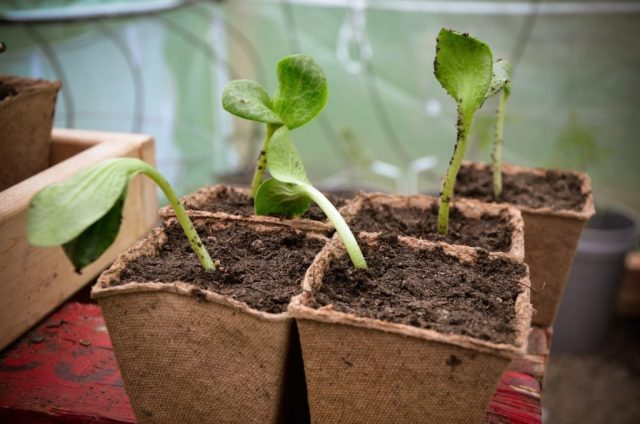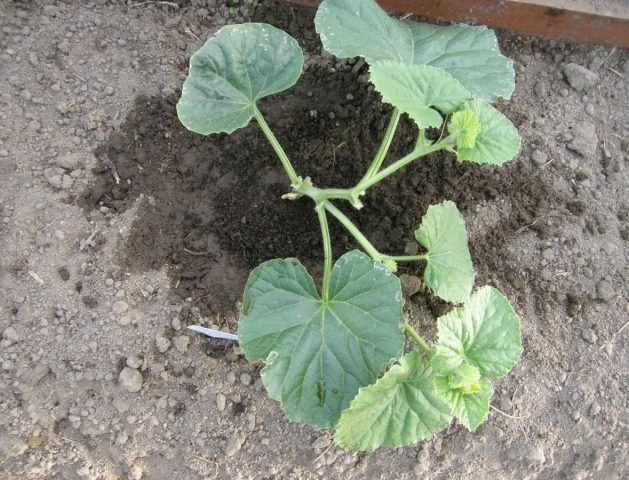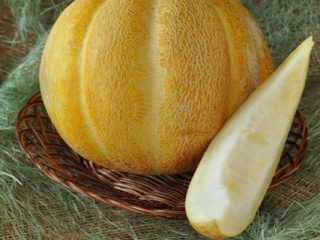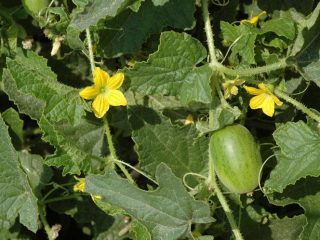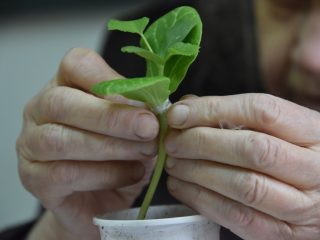Content
Melon Gulyabi comes from Central Asia. At home - in Turkmenistan, the plant is called Chardzhoz Melon. Five main varieties of culture have been bred: all fruits are sweet, juicy, soft, with a lot of vitamins. It is useful for children from the first months of life. Stored for a long time, retaining useful properties.
Description of Gulabi melon
The external color of the fruit depends on the Gulyabi variety: from even yellow to green with roughness. The pulp is white, soft, dense, juicy. Long-term storage of the culture contributes to the accumulation of sugar (about 9%) - the melon becomes juicier, the taste is preserved, the aroma is enhanced. In terms of the amount of sugar, fruits are compared to sugar cane.
For full ripening of the fruits of Gulabi, an average of 4.5 months is required (up to 133 days after germination). The standard weight of the fruit of the plant is up to 5 kg, in Russia it ripens up to 3 kg.
The culture was first brought to Russia in the 16th century. Hybrid varieties proved to be resistant to the natural conditions of the middle zone of the country. For different regions, breeders bred their own varieties of culture:
- Variety Orange. Differs in bright color of the pulp (from light, almost white to juicy orange). The fruit is juicy, ripening time is 2.5 months, after removal from the bush, it should lie in a dark place for up to 6 weeks.
- Bosvaldi variety. Shelf life is short; outwardly, the fruits are wrinkled, green with brown stripes.
- Sary-Gulyabi variety. Has a rough surface, mesh pattern, dense juicy pulp.
- Variety Chardzhoz Gulyabi. With a peel of even yellow-orange color, juicy, sweet fruit. He is called the "queen" of the melons.
- Sort Gulyabi-803... The peel is bright, yellow. The pulp is crispy, juicy, honeyed. The shape resembles an egg.
All varieties of Gulyabi are considered late ripening.
Gardeners argue: is melon a vegetable, berry or fruit? In relation to melons, this culture is considered a vegetable. Scientists call the melon "false berry". Culinary experts are used to referring to the plant as a fruit.
Calorie content of Gulyabi melon
The pulp of the plant is low in calories. There are 33 kcal or 138 kJ per 100 grams. Average value. It can change. The final indicator depends on the growing conditions of the crop, the frequency of watering, and the ripening period.
Pros and cons of the variety
Like any species, Gulabi melon has certain advantages and disadvantages. The first and most significant plus is the high content of vitamins, minerals, various salts, fiber, starch. Among the melons and gourds, Gulyabi is the most useful. Sugar is easy to digest. The general effect on the body is curative: regular use increases immunity.
The second plus is the long shelf life of the fruits. Certain varieties of Gulyabi retain their properties until the next season, right up to May: this allows obtaining vitamins from natural fruit throughout the winter.
An additional advantage of culture: a variety of dishes are prepared from the Gulabi melon. Desserts, sweets, hot items (soups, mashed potatoes, etc.) are tasty, healthy, and are often used in baby food.
Minuses:
- The difficulties of growing a crop. In the regions of Russia in the middle zone, there is a high probability of freezing of seedlings. In greenhouse conditions, the plant is not grown: the lack of sunlight, heat, ultraviolet radiation affects.Artificially created lighting does not give the desired effect.
- The likelihood of allergies. Melon Gulyabi is also contraindicated in patients with diabetes mellitus, in case of violation of lipid processing and the work of the gastrointestinal tract.
Cultivation of Gulabi melon
Melon of the Gulyabi variety requires a hot, dry climate. The plant does not tolerate high humidity. Growing requires care, you need to take into account the peculiarities of the culture when planting, leaving.
Seedling preparation
There are two options - buy ready-made plant seedlings or grow your own from non-germinated crop seeds. The first method is more expensive, but less troublesome. Seeds are taken three years old. The early ones do not form fruits, they form a barren flower.
It is necessary to make sure that the seeds are suitable for planting. 5 grams of salt is diluted in 100 ml of pure water. The good ones will sink to the bottom: they are collected, dried. Those that have come to the surface are unusable, spoiled or empty.
Ready plant seeds are soaked in advance - to accelerate the emergence of sprouts. It is necessary to wrap with damp gauze, place in a plastic bag, hang in a warm place (for example, to a battery). Or use warm wet sand. A novelty in the gardener's arsenal is the hydrogel.
Planting seeds of a plant for seedlings depends on the climate of the area and the desired age of the crop when sent to the ground. In the middle zone of the country, sowing is carried out from the end of March to the beginning of April. In the Urals and Siberia - the second half to the end of April. The Gulyabi melon is transplanted onto the ground after 35 - 40 days.
It is advisable to use individual containers for Gulyabi seedlings, with a diameter of 10 cm. It is not recommended to make a pick. For the soil, peat, humus and sod are mixed in equal proportions. For plant nutrition, add one small spoonful of ash, superphosphate, potassium sulfate.
After the emergence of seedlings, the culture is removed weak sprouts, provide a maximum of light. In cloudy weather, phytolamps are added. Direct rays should be softened - paper, fabric is put on the windows.
Watering no more than three times in seven days. It's important not to overdo it. Use settled water at room temperature.
Before planting in the ground, the seedlings of the Gulyabi melon must be prepared. Tara is taken out onto the balcony, loggia. Start at one hour, gradually adding time. Hardening of seedlings begins at least a week in advance.
Selection and preparation of the landing site
Melon Gulyabi is thermophilic. The site should be located on the southern, southwestern part of the site. Consideration must be given to wind protection. For example, some gardeners plant tall crops (sunflowers, legumes, corn) around the perimeter. Others place the plant between rows of young garden trees. For two years in a row, a crop is not grown in one place.
They begin to prepare the site in the fall: they choose a place, decorate the beds. Before winter, the soil is dug up, mixed with humus (an approximate calculation is 3.5 kg per square meter). At the beginning of spring, fertilizers are added - nitrogen, potash, phosphorus.
Landing rules
Melon Gulyabi is planted after the following crops: onions, legumes, cabbage, sweet clover, corn, wheat. It is forbidden to plant after nightshades, pumpkins, carrots. If there is no other option, all the remnants of the previous plants are burned, the soil is treated with a manganese solution (5%). Such crops have similar pests, diseases that can pass to a new plant.
Holes for seedlings are dug to a depth of 5 - 7 cm, the distance between is 1.5 m (less is impossible: the plant is melon, it creeps well). A loose lump of earth can form a small hill, no more than 5 cm high. Before planting, the soil must be watered with warm water.
Watering and feeding
Plants are watered next to the seedlings.Make a special small ditch. The water is heated (temperature about 25 ° C). A new watering of crops begins when the earth has dried out to a depth of 5 cm. During the formation of fruit ovaries, they are watered less often. Watering is completely stopped during the ripening of the Gulyabi melon. This increases the sugar level in the pulp, and the root and aerial parts avoid rotting.
Plants are fed according to the schedule:
- after the emergence of sprouts of culture on the seventh day - with ammonium nitrate, "Kemira";
10 - during the active formation of plant buds - mullein solution, rotted bird droppings (ratio 1:15);
- when fruit ovaries appear - phosphorus, potassium complementary foods (for one bucket of water 50 grams of the first, 20 grams of the second).
Complementary feeding of plants is carried out strictly during the indicated periods. The culture becomes vulnerable, weakened, therefore, additional nutrition of the melon seedlings is required.
Formation
Artificial formation of the Gulyabi melon bush will save the strength of the plant for budding, ovary, and ripening of the fruit. A maximum of 5 lateral shoots of the plant are left, and the main stem of the culture is also pinched. The number of fruit ovaries for one bush culture should not exceed 4 - 5 pieces.
Harvesting
Melon Gulyabi belongs to late-ripening crops. Fruit picking begins from late August - early September. The ripeness of the fruit of a plant is determined by some features:
- dry tail;
- from the side of the flower, the melon fruit remains soft, but without pressing;
- uniform saturated color corresponding to the variety;
- The aroma is pleasant, when you hit the peel, a dull echo is heard.
Long-term storage of the fruits of the culture allows for a large harvest. An exception is the Gulyabi Bosvaldi variety. Its fruits have a thin peel, they cannot be transported over long distances, therefore they are consumed within the first month.
Diseases and pests
The laborious process of planting and caring for the plant allows you to harvest a good harvest of melon fruits. Pests, various diseases of the culture become an obstacle. The fight against harmful consequences does not always give a result: it is more effective to take measures to prevent the development of the infection.
The pests of the Gulyabi melon include:
- melon aphid - appears on the inside of the leaves of the culture: treated with karbofos, soapy water, actellik;
- wireworm;
- melon fly - a rarity in Russia, it destroys up to half of the plant's fruits;
- spider mite - stops plant growth, weakens the culture: treated with acaricides, agents with phosphorus, sulfur;
- broomrape (parasitic plant) - instead of sucker roots, the seeds are preserved for several seasons in a row: the soil is kept clean, crop rotation is carried out, and deep plowing of the soil is carried out;
- scoops (caterpillars of butterflies): you should more often loosen the ground between the rows, chemicals strictly according to the instructions.
Diseases of culture are diverse. Often transferred from nearby plants, from infected seeds or soil. The most common are fusarium, powdery mildew, gray mold, white and angular spotting, ascochitis, copperhead.
Conclusion
Melon Gulyabi is a useful low-calorie product. The complexities of the growing process are compensated for by the shelf life of the fruits and taste. Melon is considered by gardeners to be a rewarding, fascinating culture. Even a novice summer resident can grow a Gulyabi melon.
